-
 Bitcoin
Bitcoin $107,631.9817
-1.73% -
 Ethereum
Ethereum $2,739.1787
-4.61% -
 Tether USDt
Tether USDt $1.0000
-0.01% -
 XRP
XRP $2.2427
-3.30% -
 BNB
BNB $664.0527
-0.73% -
 Solana
Solana $158.0902
-5.38% -
 USDC
USDC $0.9998
-0.01% -
 Dogecoin
Dogecoin $0.1876
-7.78% -
 TRON
TRON $0.2753
-3.21% -
 Cardano
Cardano $0.6820
-5.55% -
 Hyperliquid
Hyperliquid $43.0171
-0.38% -
 Sui
Sui $3.3308
-4.87% -
 Chainlink
Chainlink $14.3431
-7.89% -
 Avalanche
Avalanche $21.0266
-6.48% -
 Bitcoin Cash
Bitcoin Cash $437.7657
-1.56% -
 Stellar
Stellar $0.2746
-2.52% -
 UNUS SED LEO
UNUS SED LEO $8.8665
-1.96% -
 Toncoin
Toncoin $3.1885
-3.37% -
 Shiba Inu
Shiba Inu $0.0...01260
-6.84% -
 Hedera
Hedera $0.1686
-4.93% -
 Litecoin
Litecoin $88.8406
-5.16% -
 Polkadot
Polkadot $4.0542
-6.28% -
 Monero
Monero $322.5806
-4.20% -
 Ethena USDe
Ethena USDe $1.0004
-0.02% -
 Bitget Token
Bitget Token $4.7089
-3.10% -
 Dai
Dai $0.9998
-0.01% -
 Pepe
Pepe $0.0...01206
-9.06% -
 Uniswap
Uniswap $7.8694
-5.20% -
 Pi
Pi $0.6232
-2.68% -
 Aave
Aave $301.3815
-3.83%
Can the bottom three consecutive positives really be bottomed out? Volume is the key indicator
The bottom three consecutive positives pattern signals potential bullish reversal in crypto, especially when confirmed by rising volume and aligned with key technical indicators.
Jun 11, 2025 at 08:21 pm

Understanding the Bottom Three Consecutive Positives Pattern
The bottom three consecutive positives pattern is a candlestick formation often observed in cryptocurrency trading charts. This pattern typically appears after a prolonged downtrend and consists of three consecutive bullish candles following a series of bearish ones. Each positive candle closes higher than its opening, signaling potential reversal momentum.
Traders interpret this pattern as a sign that selling pressure is weakening and buyers are beginning to take control. However, it's crucial not to treat this formation as an automatic buy signal without further confirmation. In highly volatile crypto markets, false signals are common, and relying solely on price action can lead to premature entries.
The Role of Volume in Confirming Reversals
Volume plays a pivotal role in validating the legitimacy of the bottom three consecutive positives pattern. A surge in volume during or immediately after the formation suggests increased participation from buyers, which strengthens the case for a genuine reversal. Conversely, if the pattern forms with low or declining volume, it may indicate a lack of conviction among traders, increasing the likelihood of a failed breakout.
For instance, if Bitcoin drops sharply over several days but then forms three green candles in a row, observing whether each candle is accompanied by rising volume becomes essential. If the third green candle sees a spike in volume, especially above the average daily volume seen during the prior downtrend, it reinforces the probability that institutional or large retail buyers are stepping in.
How to Analyze Volume During the Formation
To properly assess volume during the bottom three consecutive positives, traders should follow these steps:
- Compare current volume to the 20-period average: Use a moving average of volume (like the 20-day SMA) to determine whether recent volume levels are significantly higher.
- Look at individual candle volumes: Each of the three positive candles should ideally show increasing volume. The third candle’s volume should be notably stronger than the first two.
- Check for divergence: If prices rise but volume declines, it could signal a fakeout. Conversely, if both price and volume rise together, it supports a real reversal.
This granular analysis helps traders filter out weak patterns and focus only on those with strong volume backing.
Case Study: ETH/USD Chart Example
Consider a scenario where Ethereum experiences a sharp decline due to macroeconomic concerns. After falling for six consecutive days, the price begins forming three green candles in a row. Here’s how volume played a key role:
- First green candle: Modest volume increase, suggesting early buying interest.
- Second green candle: Slightly higher volume, showing more participants entering.
- Third green candle: Volume spikes above the 20-day average, indicating aggressive accumulation.
In this example, the third candle's volume acted as the final confirmation point. Traders who waited for this signal were more likely to enter a profitable long position compared to those who bought after the first or second green candle.
Combining Volume with Other Technical Indicators
Relying solely on volume and candlestick patterns can still leave traders exposed to market noise. To enhance accuracy, combine volume analysis with other tools such as:
- Relative Strength Index (RSI): Check if RSI moves out of oversold territory (below 30) alongside the pattern. A crossover above 50 confirms strengthening momentum.
- Moving Averages: Look for a bullish cross between short-term and long-term moving averages (e.g., 9-day crossing above 21-day).
- Support Levels: Ensure the bottom three consecutive positives forms near a key support zone, such as a previous swing low or Fibonacci retracement level.
Using multiple confirmations increases the robustness of the trade setup and reduces the risk of acting on misleading data.
Common Pitfalls When Interpreting This Pattern
Many traders fall into traps when interpreting the bottom three consecutive positives. Some common mistakes include:
- Ignoring volume altogether: Focusing only on candle colors while neglecting volume dynamics leads to poor decisions.
- Trading without confirmation: Entering a position before the pattern fully completes or without additional indicators can result in losses.
- Overlooking broader market conditions: Even a valid pattern can fail if the overall market sentiment remains bearish or if there's negative news affecting the asset.
Avoiding these pitfalls requires discipline and a structured approach to technical analysis.
Frequently Asked Questions
What timeframes work best for analyzing the bottom three consecutive positives?
This pattern works well on intraday charts like 4-hour or 1-hour for short-term trades, as well as daily charts for swing trading. Higher timeframes tend to offer more reliable signals due to reduced volatility and noise.
Can this pattern appear mid-trend?
Yes, the bottom three consecutive positives can occur within a larger uptrend during a pullback phase. In such cases, it might indicate trend continuation rather than a full reversal. Always consider the broader context before making a trade decision.
Is volume always a reliable indicator with this pattern?
While volume is a powerful tool, it isn't foolproof. Sometimes, even with high volume, the pattern can fail due to sudden news events or whale manipulation in smaller-cap cryptocurrencies. It's best used in conjunction with other forms of analysis.
Should I place a stop-loss when trading this pattern?
Absolutely. Risk management is critical. Place a stop-loss just below the lowest point of the pattern to protect against false breakouts.
Disclaimer:info@kdj.com
The information provided is not trading advice. kdj.com does not assume any responsibility for any investments made based on the information provided in this article. Cryptocurrencies are highly volatile and it is highly recommended that you invest with caution after thorough research!
If you believe that the content used on this website infringes your copyright, please contact us immediately (info@kdj.com) and we will delete it promptly.
- Starting June 16, the Floki team will run a five-week global marketing campaign for its play-to-earn game, Valhalla.
- 2025-06-13 04:00:45
- Nightmare Accessory Airdrop 2 rewards will be distributed in June
- 2025-06-13 04:00:45
- Brazil Implements New Crypto Tax Rules That Will Benefit the Rich
- 2025-06-13 03:56:44
- Solana Surges 14% Following Clear Buy Signal, Drawing Renewed Attention
- 2025-06-13 03:50:13
- Chainlink, JPMorgan and Ondo Finance Enable Crosschain Treasury Settlement Breakthrough
- 2025-06-13 03:50:13
- Kaanch Network is a leader in the cryptocurrency market, which provides a Layer-1 blockchain solution
- 2025-06-13 03:45:13
Related knowledge
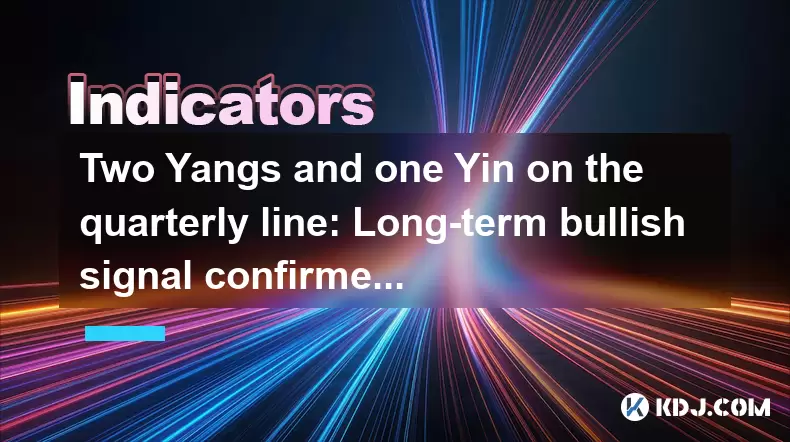
Two Yangs and one Yin on the quarterly line: Long-term bullish signal confirmed?
Jun 12,2025 at 07:00am
Understanding the 'Two Yangs and One Yin' Candlestick PatternIn technical analysis, candlestick patterns play a pivotal role in identifying potential market reversals or continuations. The 'Two Yangs and One Yin' pattern is one such formation that traders often observe on longer timeframes like the quarterly chart. This pattern consists of two bullish (...
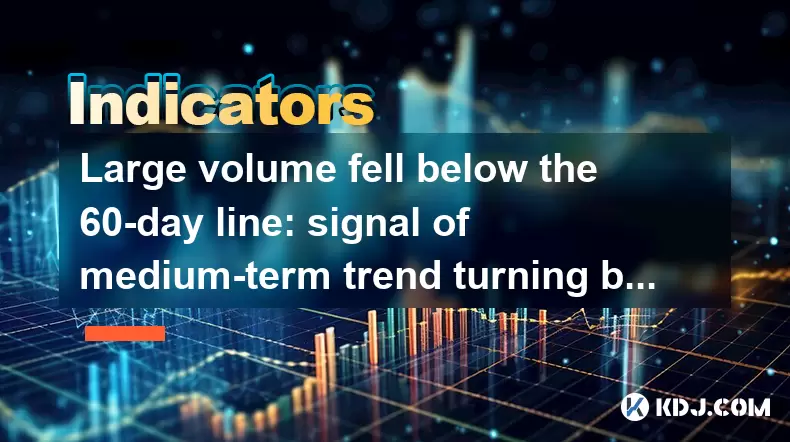
Large volume fell below the 60-day line: signal of medium-term trend turning bearish?
Jun 13,2025 at 03:42am
Understanding the 60-Day Moving Average in CryptocurrencyIn cryptocurrency trading, technical analysis plays a crucial role in predicting price movements. One of the most commonly used indicators is the 60-day moving average (MA), which smooths out price data over the last 60 days to provide traders with insights into the medium-term trend. When large v...
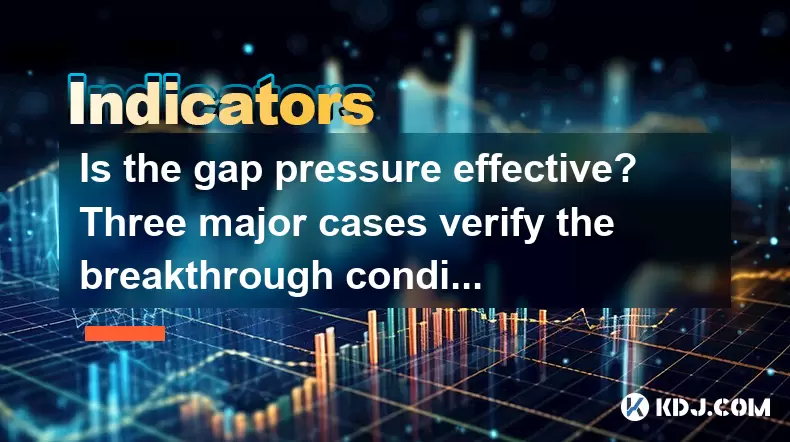
Is the gap pressure effective? Three major cases verify the breakthrough conditions
Jun 13,2025 at 04:35am
Understanding the Gap Pressure in Cryptocurrency TradingIn cryptocurrency trading, gap pressure refers to a technical analysis concept where price gaps form due to sudden market movements. These gaps often occur between the closing price of one trading session and the opening price of the next. Traders pay close attention to these gaps because they can ...
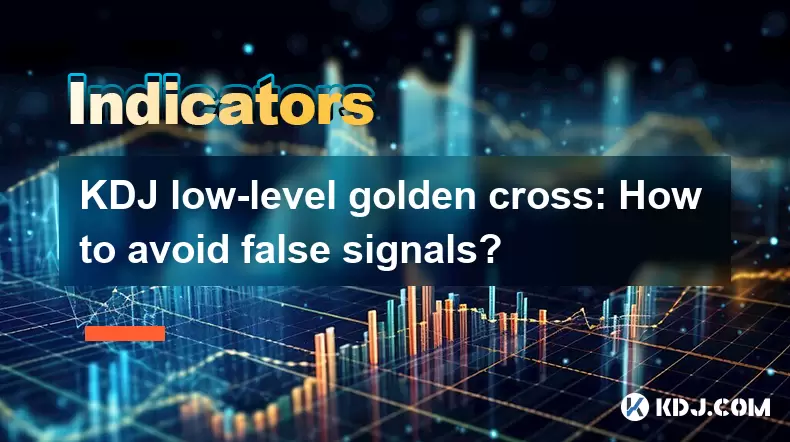
KDJ low-level golden cross: How to avoid false signals?
Jun 12,2025 at 08:21am
Understanding the KDJ IndicatorThe KDJ indicator, also known as the stochastic oscillator, is a momentum-based technical analysis tool widely used in cryptocurrency trading. It consists of three lines: the %K line (fast stochastic), the %D line (slow stochastic), and the %J line (divergence value). These lines oscillate between 0 and 100, helping trader...

Bottom-up volume stagnation: Is it accumulation or heavy selling pressure?
Jun 12,2025 at 01:42pm
What Is Bottom-Up Volume Stagnation?Bottom-up volume stagnation refers to a specific pattern observed in cryptocurrency trading charts where the price of an asset moves sideways or slightly downward, and trading volume remains consistently low over an extended period. This phenomenon is often seen after a sharp price drop or during a prolonged bear mark...
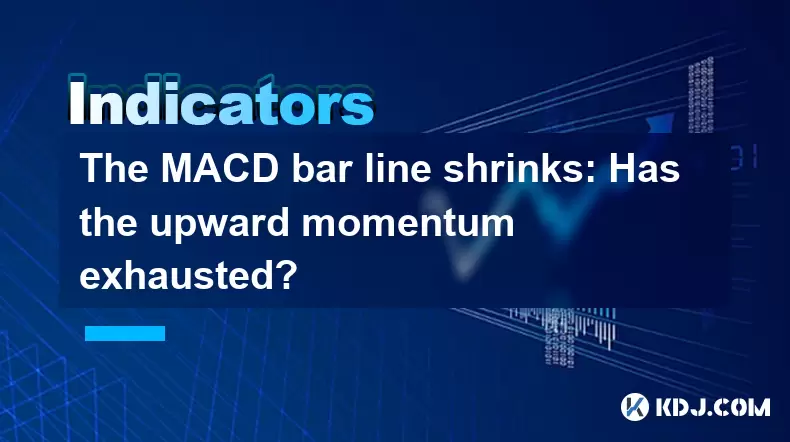
The MACD bar line shrinks: Has the upward momentum exhausted?
Jun 12,2025 at 12:49am
Understanding the MACD Bar LineThe Moving Average Convergence Divergence (MACD) is a widely used technical indicator in cryptocurrency trading. It consists of three main components: the MACD line, the signal line, and the MACD histogram (also known as the bar line). The MACD bar line represents the difference between the MACD line and the signal line. W...

Two Yangs and one Yin on the quarterly line: Long-term bullish signal confirmed?
Jun 12,2025 at 07:00am
Understanding the 'Two Yangs and One Yin' Candlestick PatternIn technical analysis, candlestick patterns play a pivotal role in identifying potential market reversals or continuations. The 'Two Yangs and One Yin' pattern is one such formation that traders often observe on longer timeframes like the quarterly chart. This pattern consists of two bullish (...

Large volume fell below the 60-day line: signal of medium-term trend turning bearish?
Jun 13,2025 at 03:42am
Understanding the 60-Day Moving Average in CryptocurrencyIn cryptocurrency trading, technical analysis plays a crucial role in predicting price movements. One of the most commonly used indicators is the 60-day moving average (MA), which smooths out price data over the last 60 days to provide traders with insights into the medium-term trend. When large v...

Is the gap pressure effective? Three major cases verify the breakthrough conditions
Jun 13,2025 at 04:35am
Understanding the Gap Pressure in Cryptocurrency TradingIn cryptocurrency trading, gap pressure refers to a technical analysis concept where price gaps form due to sudden market movements. These gaps often occur between the closing price of one trading session and the opening price of the next. Traders pay close attention to these gaps because they can ...

KDJ low-level golden cross: How to avoid false signals?
Jun 12,2025 at 08:21am
Understanding the KDJ IndicatorThe KDJ indicator, also known as the stochastic oscillator, is a momentum-based technical analysis tool widely used in cryptocurrency trading. It consists of three lines: the %K line (fast stochastic), the %D line (slow stochastic), and the %J line (divergence value). These lines oscillate between 0 and 100, helping trader...

Bottom-up volume stagnation: Is it accumulation or heavy selling pressure?
Jun 12,2025 at 01:42pm
What Is Bottom-Up Volume Stagnation?Bottom-up volume stagnation refers to a specific pattern observed in cryptocurrency trading charts where the price of an asset moves sideways or slightly downward, and trading volume remains consistently low over an extended period. This phenomenon is often seen after a sharp price drop or during a prolonged bear mark...

The MACD bar line shrinks: Has the upward momentum exhausted?
Jun 12,2025 at 12:49am
Understanding the MACD Bar LineThe Moving Average Convergence Divergence (MACD) is a widely used technical indicator in cryptocurrency trading. It consists of three main components: the MACD line, the signal line, and the MACD histogram (also known as the bar line). The MACD bar line represents the difference between the MACD line and the signal line. W...
See all articles

























































































